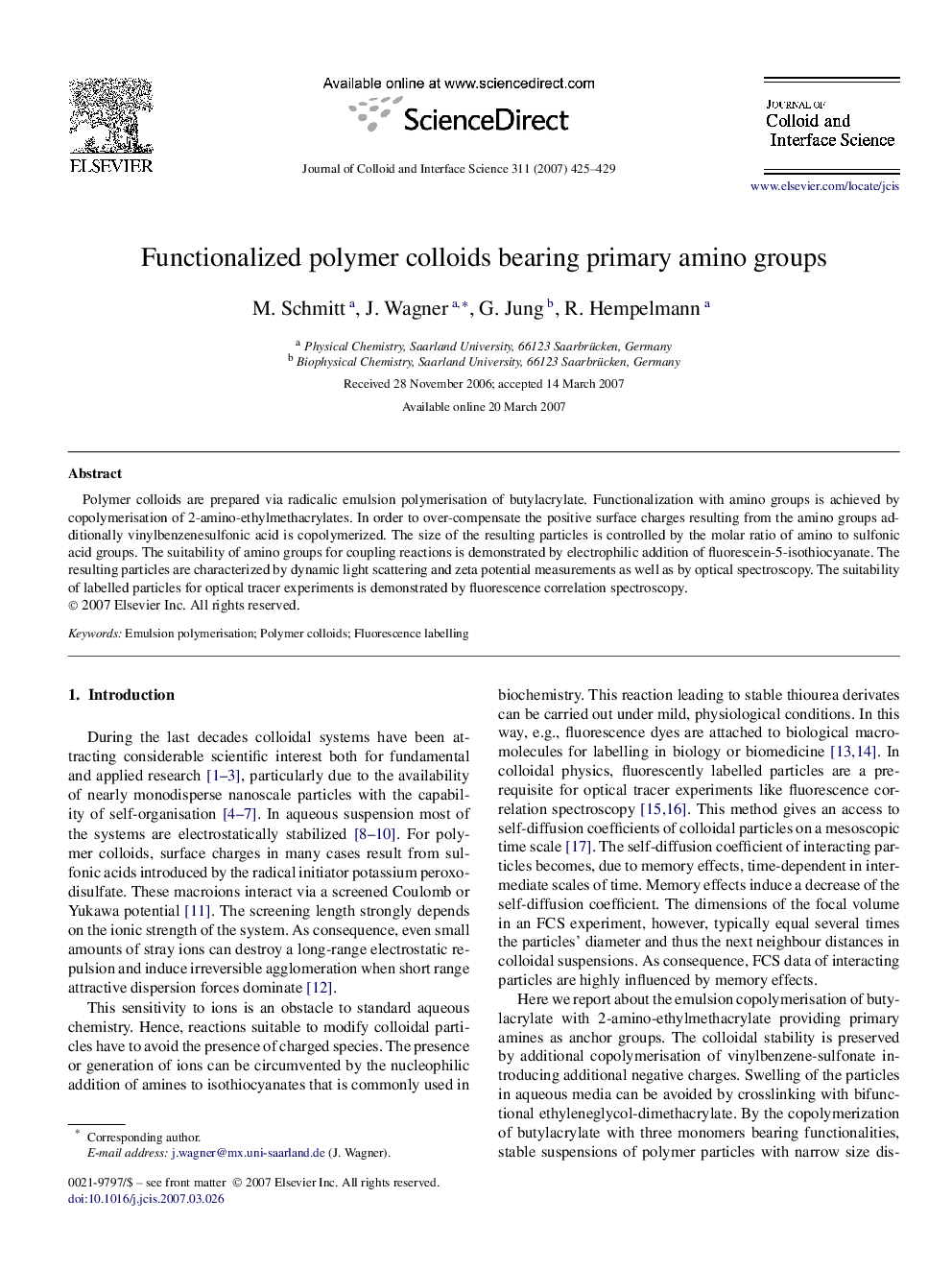| Article ID | Journal | Published Year | Pages | File Type |
|---|---|---|---|---|
| 611579 | Journal of Colloid and Interface Science | 2007 | 5 Pages |
Polymer colloids are prepared via radicalic emulsion polymerisation of butylacrylate. Functionalization with amino groups is achieved by copolymerisation of 2-amino-ethylmethacrylates. In order to over-compensate the positive surface charges resulting from the amino groups additionally vinylbenzenesulfonic acid is copolymerized. The size of the resulting particles is controlled by the molar ratio of amino to sulfonic acid groups. The suitability of amino groups for coupling reactions is demonstrated by electrophilic addition of fluorescein-5-isothiocyanate. The resulting particles are characterized by dynamic light scattering and zeta potential measurements as well as by optical spectroscopy. The suitability of labelled particles for optical tracer experiments is demonstrated by fluorescence correlation spectroscopy.
Graphical abstractParticle size distribution of polymer particles bearing primary amino groups. The size and size distribution can be tuned by the molar ratio of the copolymers vinylbenzenesulfonic (VBS) acid and 2-amino-ethylmethacrylate (AEMA).Figure optionsDownload full-size imageDownload as PowerPoint slide
